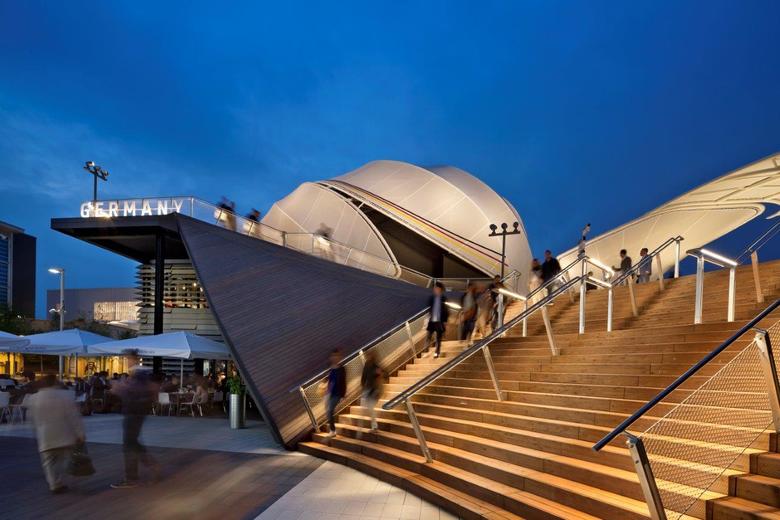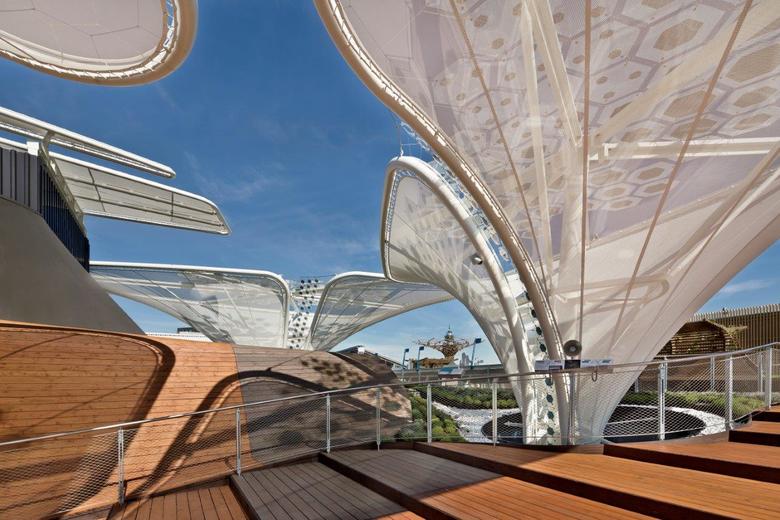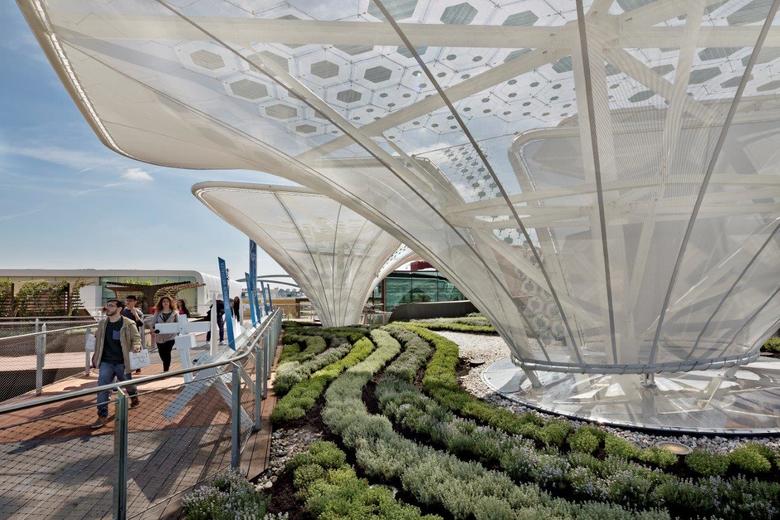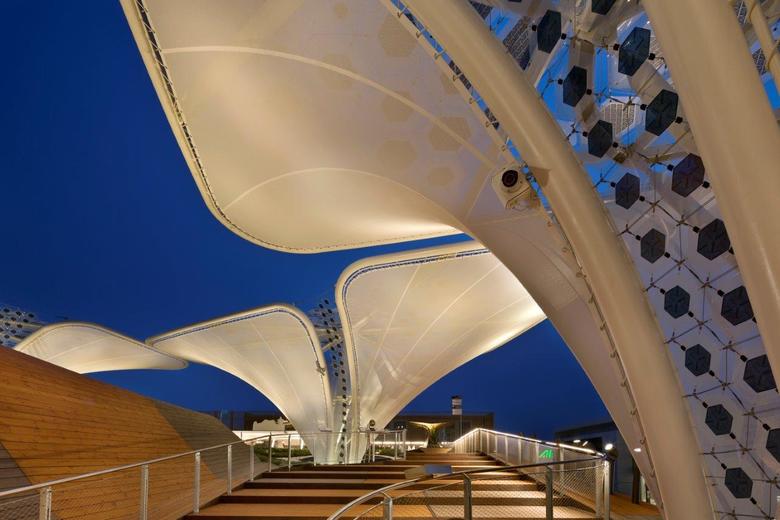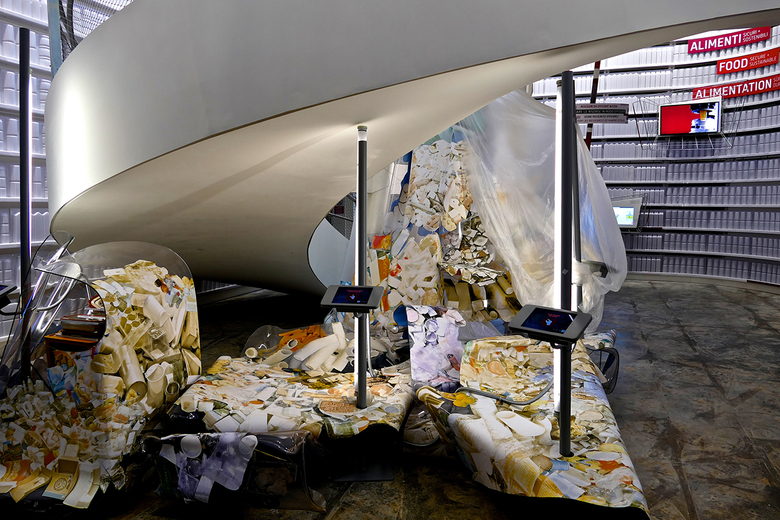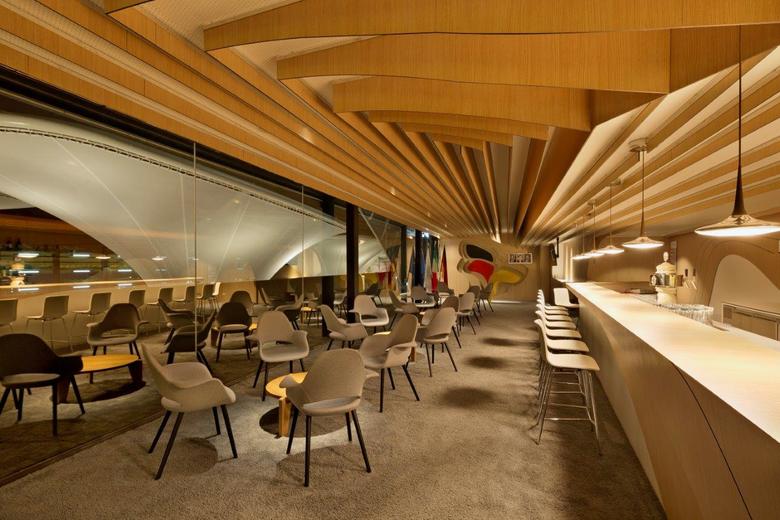Germany's 'Field of Ideas' Pavilion at Expo Milano 2015
Fred Bernstein
12. May 2015
Photo: Andreas Keller
Germany’s pavilion, seen from the main route through the Expo, isn’t especially impressive. Indeed, it looks something like a boardwalk on which several tents have been erected. Passersby are likely to keep walking, drawn to the more glitzy pavilions, the ones with flashing lights, mirrored walls, and shapes that are easily grasped.
Photo: Andreas Keller
If they do keep walking, they will be missing one of the best pavilions at the Expo, and one of the few pavilions in which the container and contained — the building and the exhibitions — were conceived together. That is a result of the sensible German selection process, in which architects and exhibition designers bid on the pavilion commission as teams. (In many other countries, architects propose ideas for buildings, and what goes inside those buildings is decided later, often at the last minute.)
Photo: Andreas Keller
The architect of the pavilion is Lennart Wiechell, managing partner of SCHMIDHUBER, the large Munich-based firm that also designed the German pavilion for the Shanghai Expo five years ago. The display and interactive design is by Milla & Partner, Stuttgart. Together, they conceived a pavilion that allows visitors to choose between two possible routes. The first route, following the outdoor boardwalk, allows for short visits to the pavilion without the need to wait in line. As one moves along the boardwalk (gradually ascending to the second floor), there are lessons about sixteen German regions. Each centers around a large tree-like structure: a steel frame supporting tensile membranes onto which photovoltaic panels have been printed. The energy the trees generate by day keeps them illuminated at night.
Photo: Andreas Keller
The other route takes visitors into the ground floor exhibition hall. There, a three-minute film introduces the pavilion themes. And there each visitor is issued an iPad-sized sheet of cardboard called a "seed board." The seed board becomes a personal screen; as one walks through the ground floor exhibition hall, sensors in the ceiling read the position of the board and project still and moving images onto it; swiveling the board is the equivalent of clicking a mouse. But the exhibition isn’t all virtual; there are also beautiful "physical" spaces to discover. Lessons about land, water, climate and biodiversity are presented in thoughtfully designed environments, including one with the spatial ambiguity of a James Turrell installation, another a gorgeous room which simulates, with the shape of boxes and bottles and cans, a storehouse. TV screens, moving on tracks across the "shelves," depict methods of food production.
Photo: © German Pavilion Expo Milano 2015 / B. Handke
Whichever route a visitor takes — outdoors on the boardwalk, or indoors through the ground floor exhibition hall — it is possible to end the visit with a German meal in one of three settings. The most "conventional" is a top-floor restaurant with sculpted plywood surfaces and photovoltaic panels in artful geometric patterns imprinted on its windows. It is so beautiful that, after the Expo closes, it should move to a German city for the benefit of design aficionados who couldn’t make it to Milan.
Photo: Andreas Keller
Fred Bernstein is a writer based in New York City.
